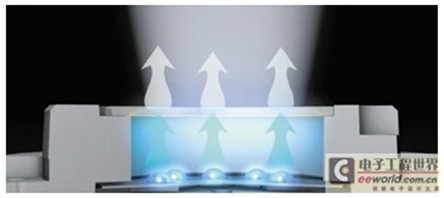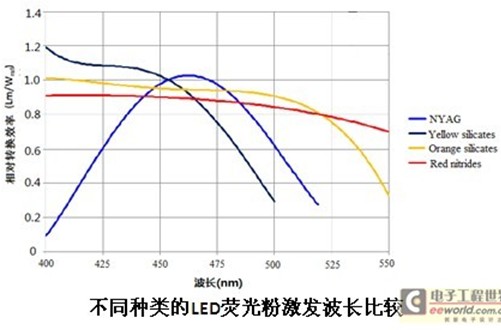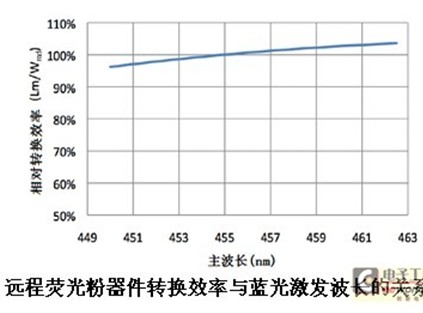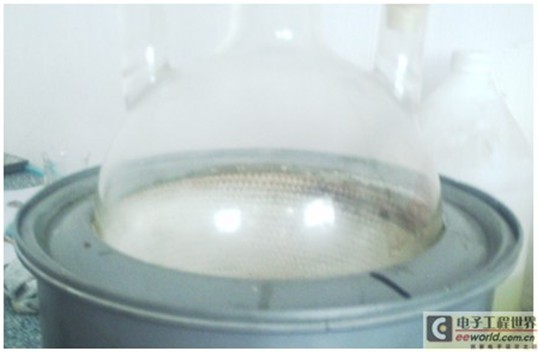Remote phosphor device preparation method and application
First, the principle of remote phosphor device
The LED remote phosphor device precisely attaches the composite phosphor to the substrate, separates it from the blue LED source, and the independent phosphor emits light under the excitation of blue light.

Since the phosphor is separated from the light source, the phosphor temperature is low, the conversion efficiency is high (temperature coefficient), and the phosphor attenuation is reduced, and the entire LED illumination system has higher reliability and less light decay.
Under the excitation of blue light, the LED phosphor emits different colors of light after the energy level transition, as shown in the figure below.

The optimal excitation wavelengths of different kinds of LED phosphors are different. The aluminate YAG phosphors have the highest excitation efficiency at around 460 nm; the yellow silicate phosphors have higher conversion efficiency under blue excitation of less than 455 nm; orange silicic acid Salt and red nitride phosphors have high conversion efficiencies over the entire blue wavelength range.

The remote phosphor device is a mixture of different kinds of phosphors, and the conversion efficiency is high at around 462 nm.

2. Preparation of remote phosphor silicone rubber
Raw materials: 1. Methyl vinyl polysiloxane (molecular weight 650,000. Vinyl content 0.18%)
2. Methyl vinyl polysiloxane (molecular weight 650,000. vinyl content 0.03%)
Hexamethyldisilazane
4. Dimethyldiethoxysilane
5. High hydrogen silicone oil
6. Butyl stearate
7. Vapor white carbon black (specific surface area 300m2 / g)
8. Phosphors (different manufacturers or different categories)
9. Peroxide vulcanizing agent (YY-C-8B) or platinum two-component vulcanizing agent PL-10A/TM-10B
Required equipment:
1. Vacuum kneading machine (5L)
2. Open mill K160A
3. Flat vulcanizing machine
4. Tensile testing machine
5. Rubber hardness tester
6. Rubber thickness gauge
7. Planetary Mixer (2L)

Preparation of basic silicone rubber carrier:
Two different vinyl content of methylvinylsiloxane 1000G was put into a 5L vacuum kneader according to (3; 2 mass ratio), and stirred for 10 minutes to introduce fumed silica 300-500G, hexamethyldisilazane 30-50G, dimethyldiethoxysilane 5-10G (batch input), stir evenly, raise the temperature by 140 degrees, vacuum-0.08MPA heat treatment for 2 hours, then high hydrogen silicone oil 10-15G, stearic acid Butyl 2-5G was placed in a vacuum kneader and stirred under vacuum for 20 minutes. Cool the discharge.

Chemical treatment of phosphors:
Phosphor 100G, absolute ethanol 500G, KBM-602 were coupled to 5G in proportion, and KBM-792 coupling agent 10G was placed in a 2L planetary mixer to heat 100 degrees, and vacuum-0.08 MPA was heat-treated for 2 hours. After the product is put into the funnel to filter the liquid, the product is placed in a glass dish and heated at 100 degrees for 2 hours to obtain a sealed product for storage.

Preparation of remote phosphor silicone rubber:
The base silicone rubber carrier 1000G prepared above is placed on the open mill to be evenly spread, and then the treated phosphor 30-100G is put into the carrier and repeatedly thinned for 10 times, and finally the self-produced vulcanizing agent (YY-C-8B) is added. 20G or platinum two-component vulcanizing agent (PL-10A/TM-10B) 25G is repeatedly thinned evenly on the open mill for 10 times.